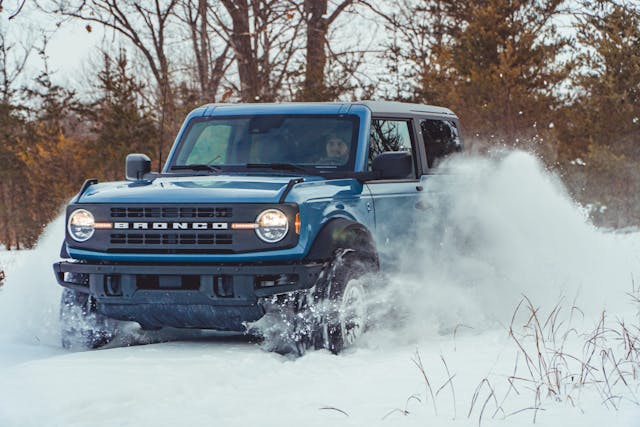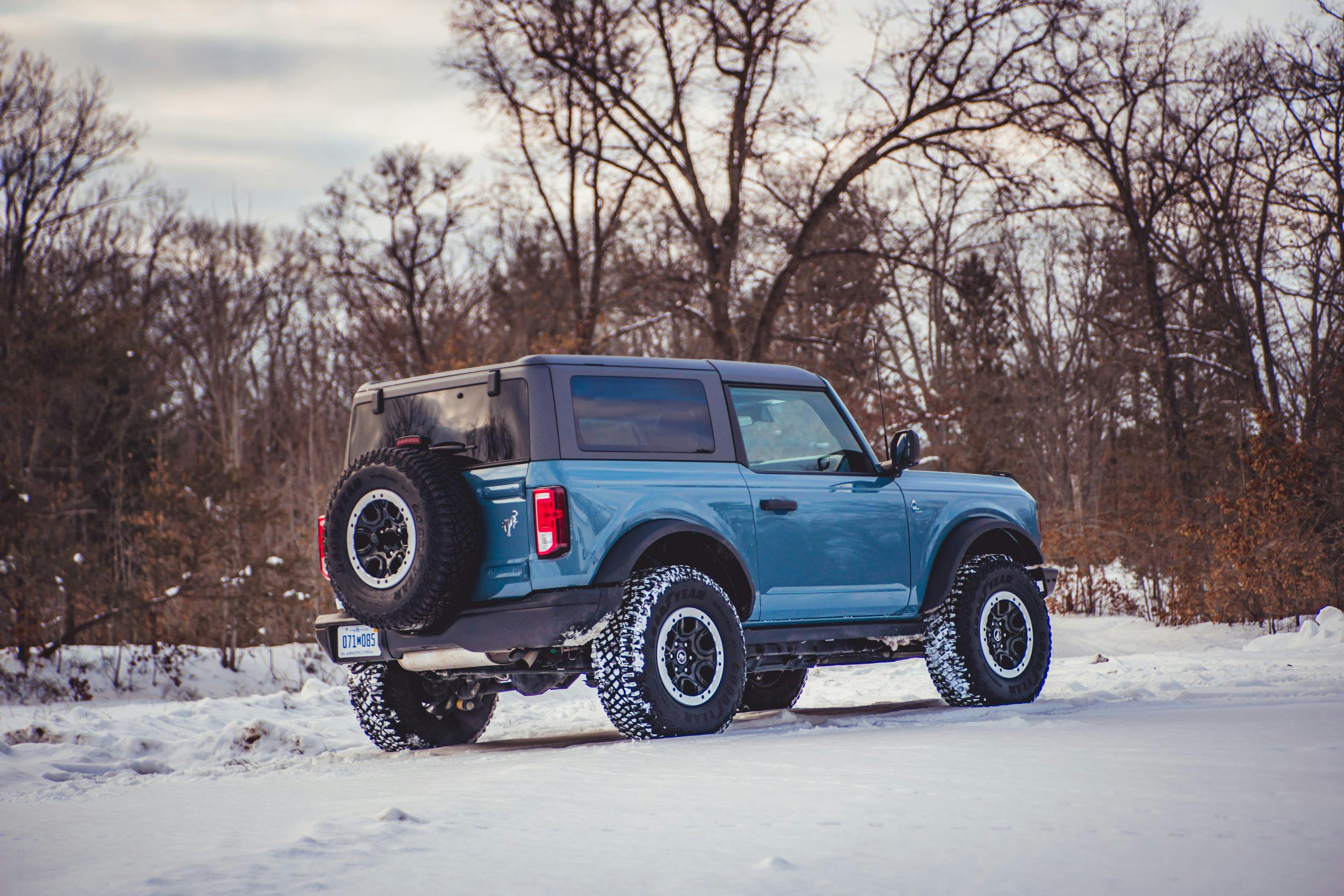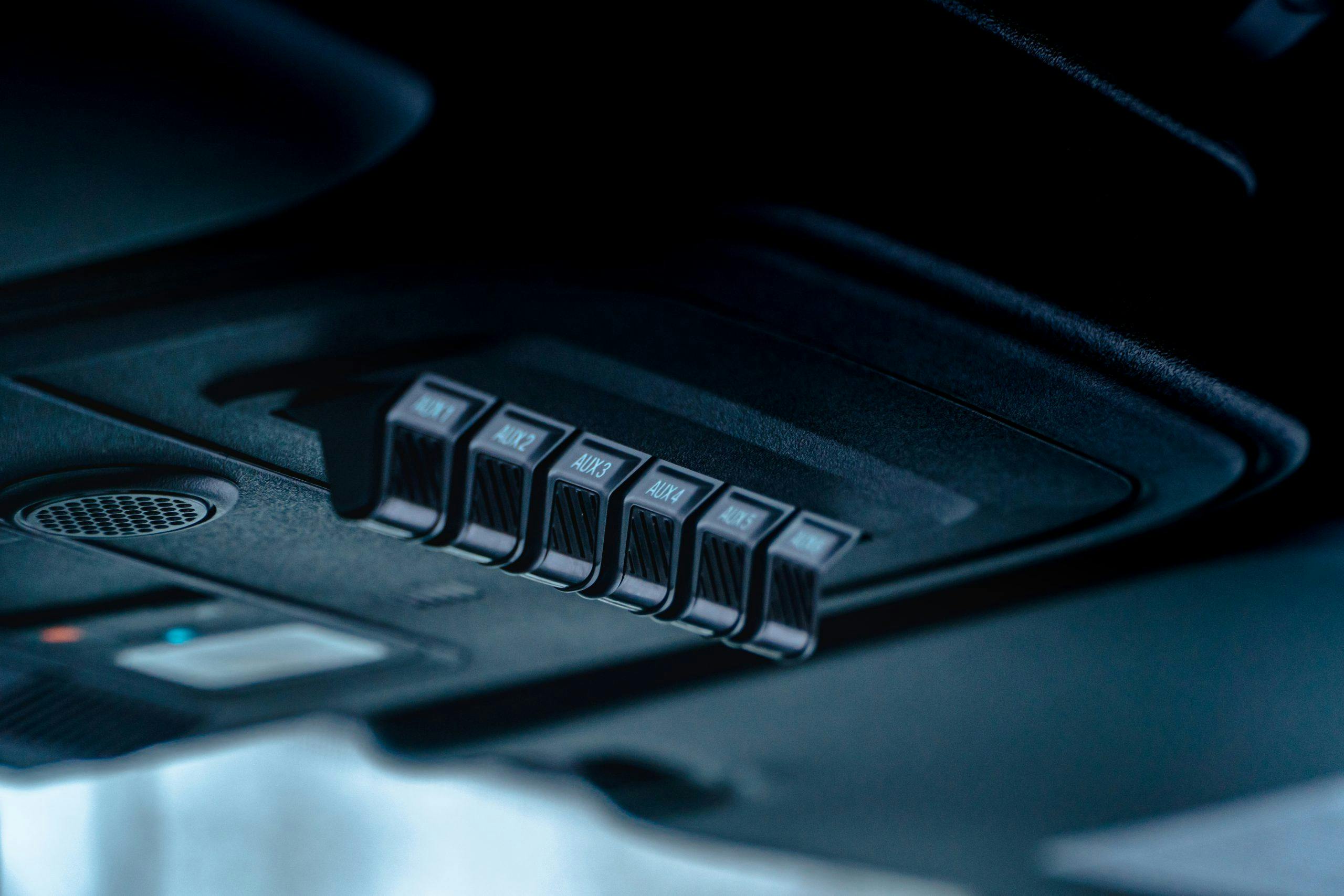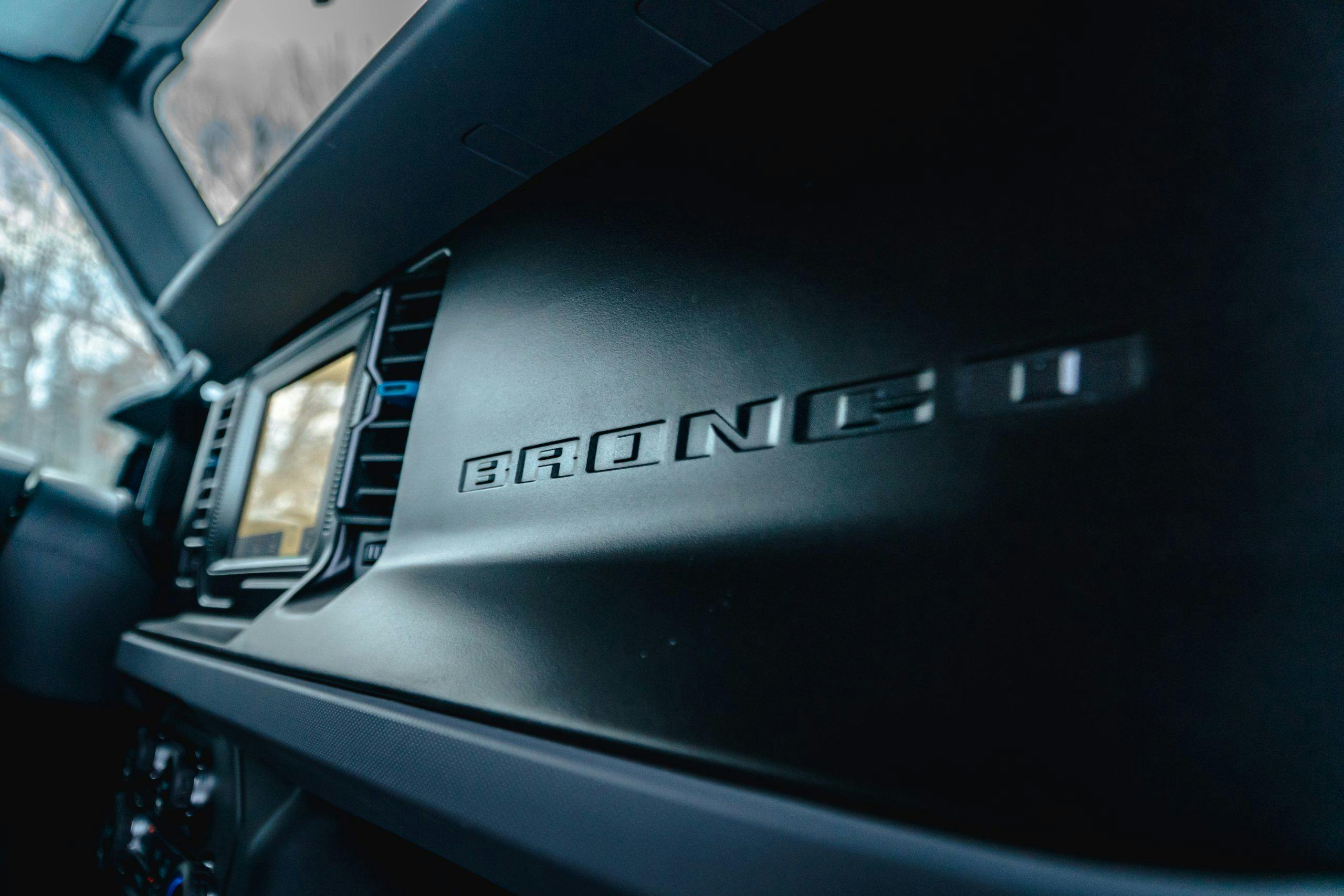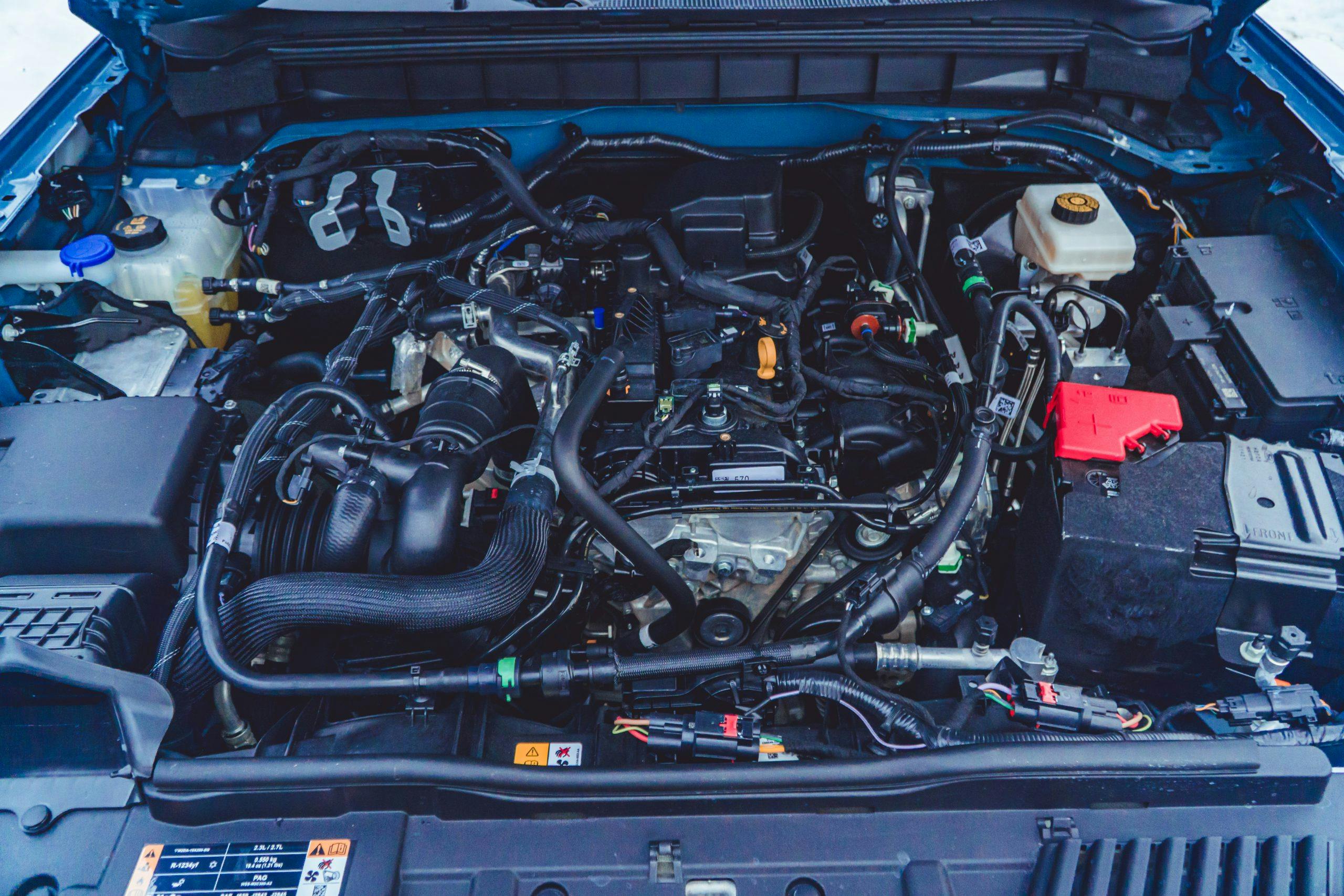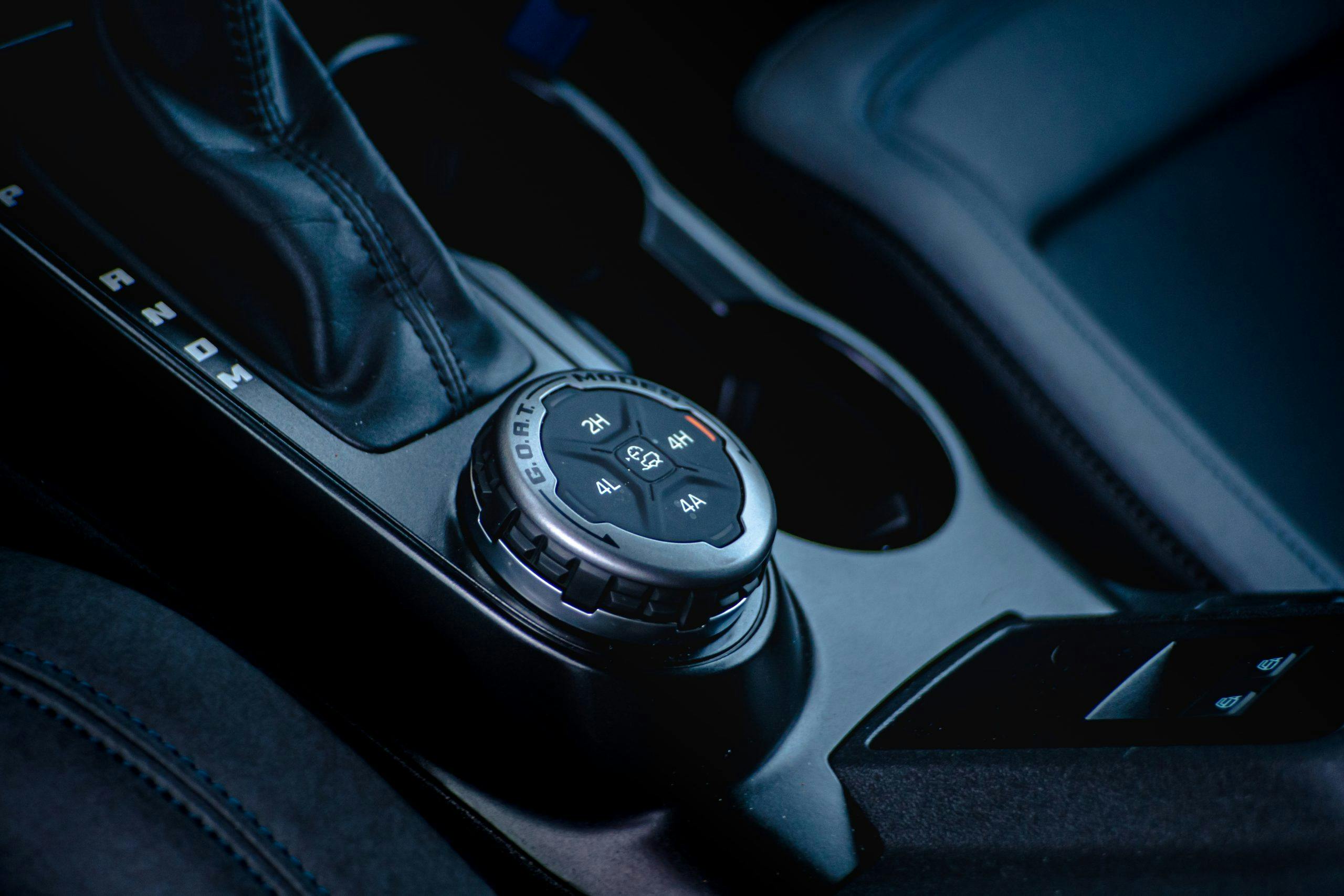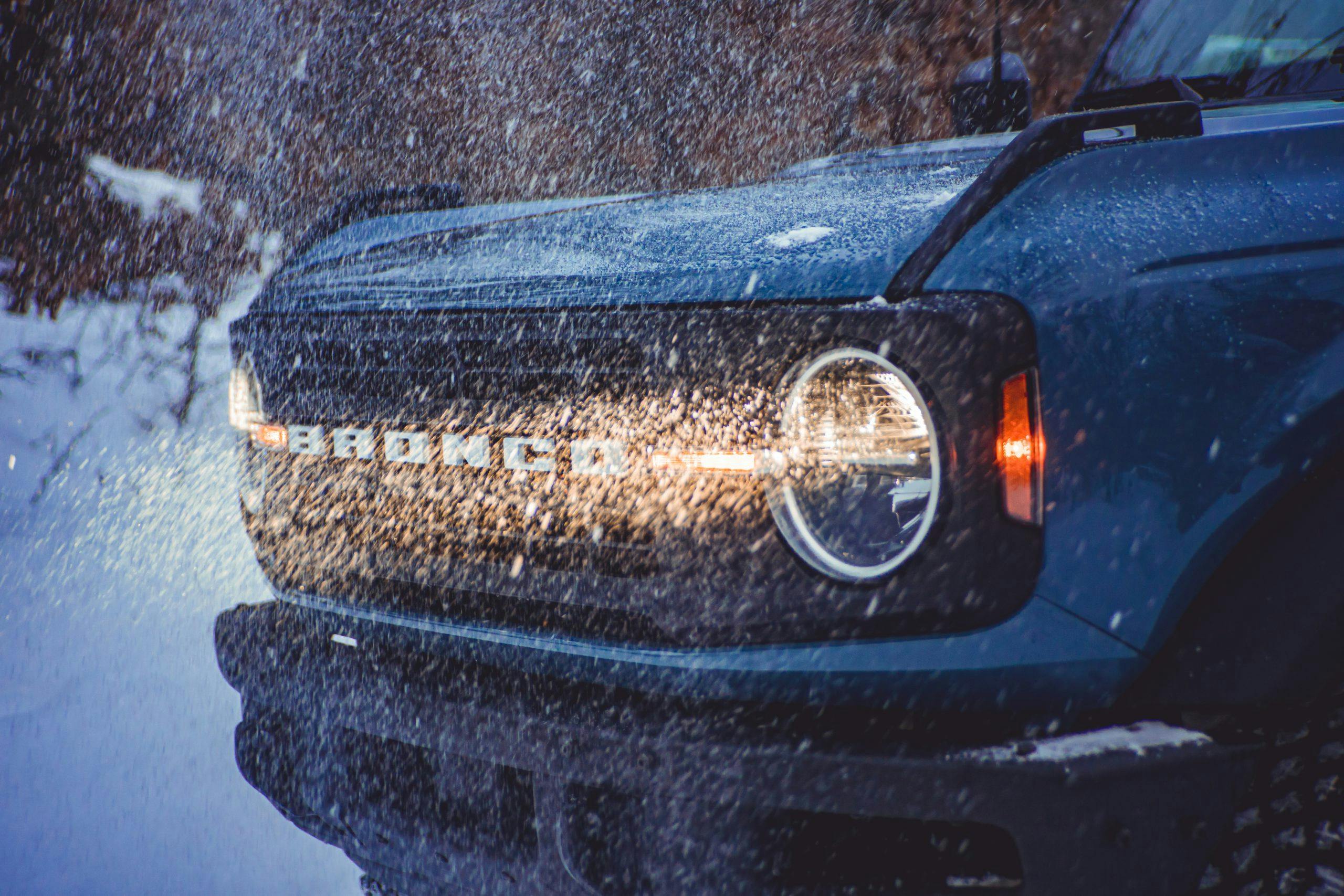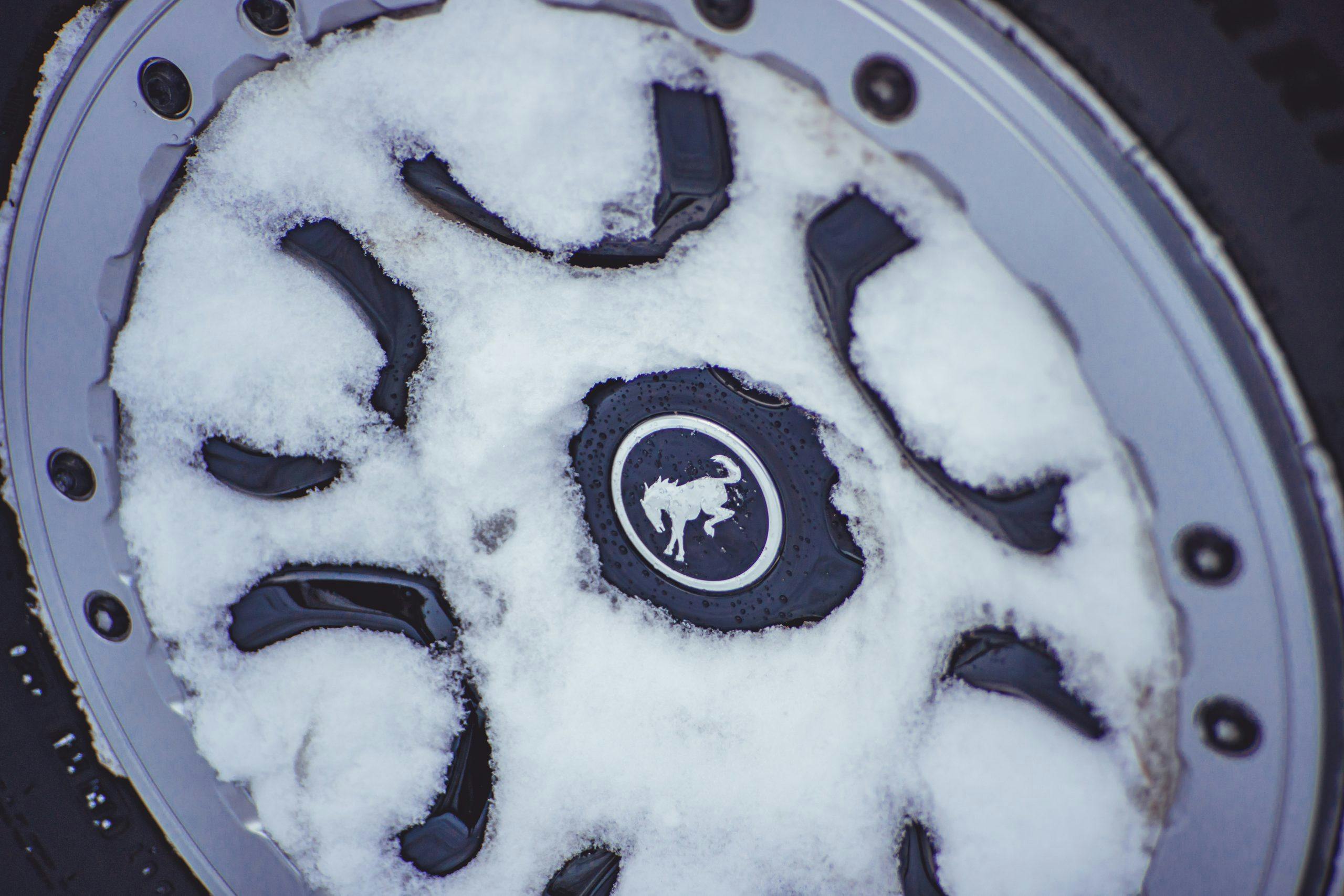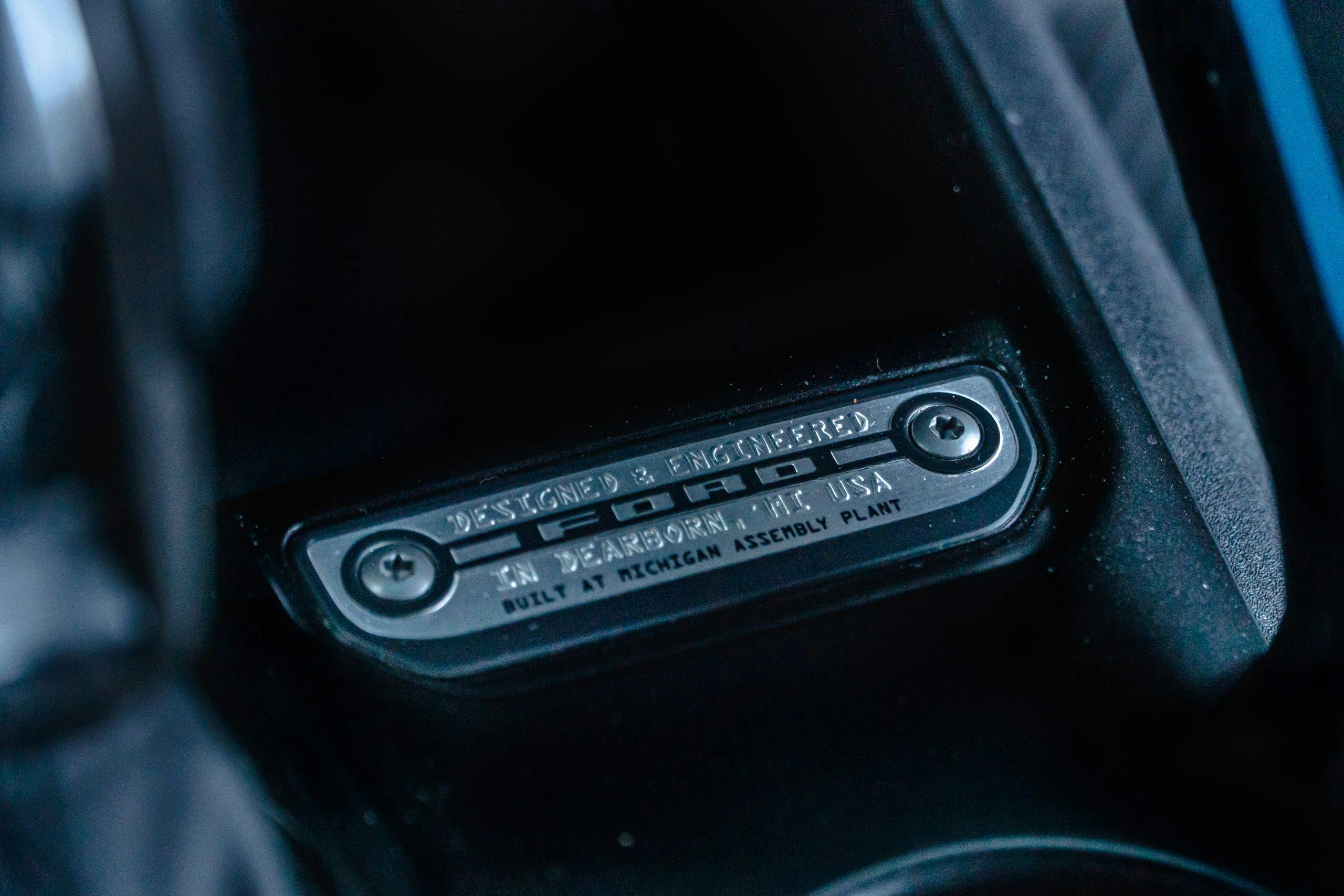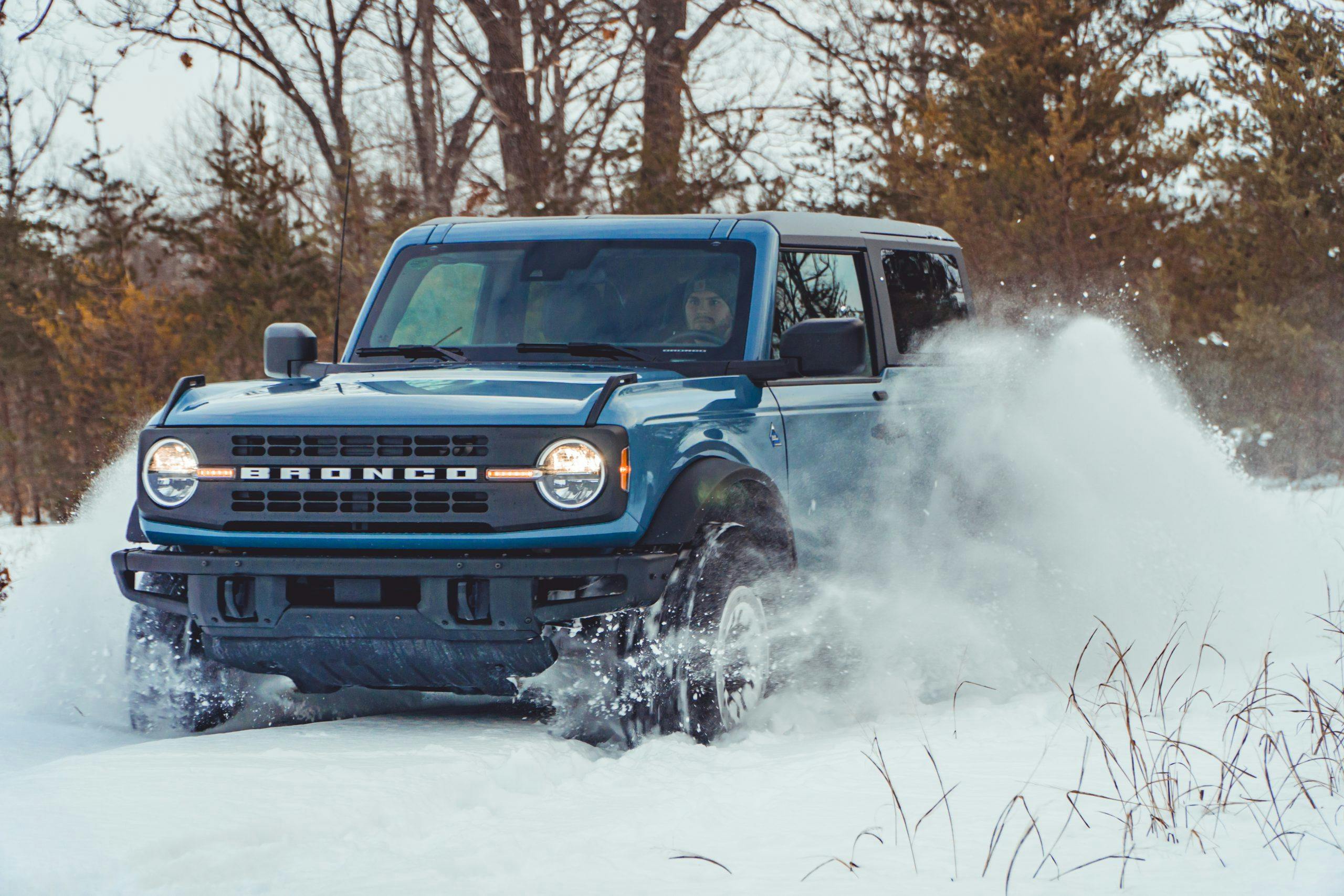Media | Articles
Review: 2021 Ford Bronco Black Diamond 2-Door
My friend Mitch is a very smart and successful man living in Colorado who’d just received the build date for his Bronco, a base two-door model with the Sasquatch package. As I drove our Black Diamond Bronco test vehicle out of Flint, headed north, I thought I’d ask why he picked the Bronco over other bonafide Colorado chariots such as the Toyota 4Runner or the new Subaru Outback Wilderness. “We’ve never done any off-roading before, but out in Colorado there are tons of great trails,” he explained. “We want to get into that. The Bronco feels like a great platform to start with.”

Mitch isn’t wrong. The Bronco is a more beginner-friendly package than its direct competitor, the venerable Jeep Wrangler. But it’s still a deeply compromised everyday vehicle. Both the Bronco and the Wrangler require trade-offs to make the most of their intended use cases. So we decided to spend a week in snowy Northern Michigan and find out more about those trade-offs. Will they be too much for the newcomers that the Blue Oval’s buzz-worthy showpiece is likely to attract?

We’ve spent plenty of time in the Bronco already, from an in-depth off-road review in the rocky southwest to an overview of the platform gleaned from two days at Ford’s Bronco Off-Roadeo, the boots-on-the-ground instructional event meant to familiarize new owners with what their machine can do when the blacktop ends. This time we’re driving an automatic-transmission Black Diamond two-door, and we’re focused on everyday use in difficult conditions.
Choose the Black Diamond, and your $38,340 gets you a few useful few advantages for roughly $8000 more than a base Bronco: standard locking rear differential, steel front and rear bumpers (this one has the heavy-duty modular bumper which was standard for 2021, but is a $575 option for ’22), rock rails, heavy-duty skid plates, marine-grade vinyl seats instead of cloth ones, and two additional modes (mud/ruts and rock crawl) for the G.O.A.T. (Goes Over Any Terrain) drive mode controller. Our tester was equipped with a few noteworthy extras as well: a 10-speed automatic in place of the seven-speed manual ($1595); the Sasquatch package, which adds meaty 35-inch Goodyear M/T tires, a 4.7 final drive rear end with locking front and rear differentials, 17-inch beadlock-capable wheels, and Bilstein position sensitive dampers ($4495, price varies dependent on trim); keyless entry ($110); and a molded-in-color hard top at no cost. All-in, we were looking at $44,905, including a $1495 destination fee.
Reviving a classic silhouette for modern service is a tough mandate to give a design team, but the Bronco absolutely nails it. Sharing a fully-boxed steel frame with the Ranger midsize pickup, the Bronco makes an open-and-shut case as the better adaptation of this architecture. Joy and bravado are balanced nicely in the exterior. It’s a happy face, a breath of fresh air when even a Honda CR-V looks aggro enough to scare pedestrians. Equipped with those monstrous tires, this thing looks like a life-size Tonka truck, and it’s better for it.
Marketplace
Buy and sell classics with confidence

The cabin is similarly impressive, equal parts REI special and your neat-freak aunt. Everything feels guided by durability and ease-of-cleaning, from the marine-grade vinyl seats to the rubberized spray-out floors. Neat touches like integrated grab handles along the dashboard and center console and a pre-wired set of accessory switches overhead are clearly the results of Ford studying what Bronco buyers want right from the get-go. It would be nice to have heated seats up in the frigid north, (available with the mid-grade 322A package, $1495) but the small cabin heats up in a hurry.
The Bronco’s upright design has all the aerodynamic functionality of a brick and at speed the wind noise in the cabin is astonishing. Sure, it’s no worse than a Wrangler, but we’re comparing a rock concert to an EDM festival here. The modest six-speaker sound system (you’ll need at least the Outer Banks model for access to the 10-speaker B&O system) is hard pressed to out-shout the roar on the highway. Two-door models do have four seats, but the rears are largely pointless unless you’re in a pinch. They’re cramped and tough to get into—especially with the added clearance from our tester’s 35-inch tires. Plan on acceptable occupant count matching the number of doors on your rig. Shame that those rears don’t fold flat—folks looking to fit a drawer and shelf unit, a popular mod for overlanding, will have to get creative to achieve a level setup.
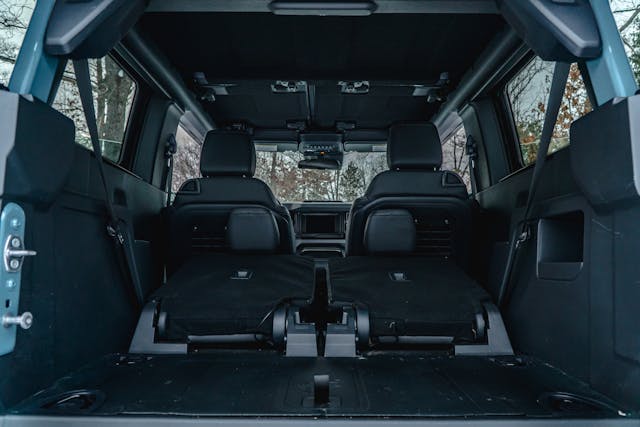
One piece of shared hardware that feels better suited to the Bronco than the Ranger: the 2.3-liter turbocharged four-cylinder engine. On regular gas, it’s good for 275 hp and 315 lb-ft of torque. Feed it premium, and outputs jump to 300 and 325, respectively. If that’s not enough, you can plunk down $1895 for the 2.7-liter twin-turbo EcoBoost V-6 in any model up to the Wildtrak, where the bigger mill becomes standard. The seven-speed manual with ultra-low crawler gear is the standard transmission on the Black Diamond, but the optional 10-speed automatic will be the more common choice, especially for newcomers. An electronically-controlled two-speed transfer case (read: no second lever by your shin) delivers real four-high and four-low capability, while Ford’s advanced-track 4×4, which comes with the Sasquatch Package, adds a four-auto setting that adjusts power front to back and actuates the lockers, dependent on grip conditions.
Purists may scoff at electronics managing the mechanicals, but the variables adjusted by these components aren’t immediately understood by novices. Properly equipped, the Bronco can eliminate much of the off-roading decision tree and allow rookies to just get on with it. As confidence and skills improve, owners can stray away from four-auto and start to learn the proper combinations on their own.
Ford’s decision to use an independent front suspension, instead of a solid axle as seen in the Wrangler, is another smart move. The ride is remarkably civil on the road, which will be a plus in everyday use. I could take my hands off the wheel and the Bronco would track dead straight at 75 mph, even with Monster Jam-adjacent tires. The Bilstein dampers from the optional Sasquatch package help iron out crummy roads, and while it’s no Raptor (that one’s coming), this thing didn’t care a wink about potholes. The short gearing and boosted nature of the engine can occasionally result in some tail-out antics on snowy roads, but you won’t catch us complaining. Did we play rally car in a vehicle with nearly a foot of ground clearance? Why yes, yes we did—it’s laugh out loud fun.
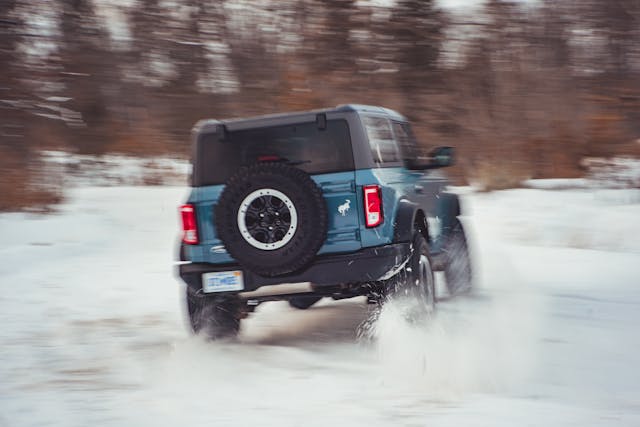
You’ll cackle all the way to the gas station … at least for the first few of the many times you’ll be there. Big rubber, bricky styling, and a boosty engine do not a fuel sipper make. With even the mildest of breezes anywhere but at the Bronco’s backside, the engine had to maintain four to five pounds of boost to hold 75 mph, which dragged fuel economy as low as 14 mpg over long stretches. The six-pot might be marginally better for highway duty when 35-inch tires are involved, but there’s no getting around the fact that what makes the Bronco look this good also costs it at the pump. Nothing to wave the white flag over; just truths of the form factor.
At the trailhead, concerns about the shortcomings of a turbo four-cylinder mostly disappear. The light and compact mill acquits itself superbly when speed is not the goal, and although it can be tough to modulate boost at first, the right G.O.A.T. mode can help keep things under control. The snowy trails near town were a cakewalk for the Bronco, and I never wanted for more grunt. I did wish for a shrink ray a few times, though. The Bronco’s vast hood and lack of 360-degree trail cam (you’ll need to spring for at least the Outer Banks if you want that option) made some tight spots a little sweatier than fledgling crawlers might prefer. Use the buddy system for early endeavors; it’s more fun with friends anyways.

Lack of a trail cam aside, the Black Diamond’s 8-inch infotainment cluster proved perfectly acceptable for everyday duty. There’s a 12-inch unit offered in higher trims, but don’t pay up solely for that. Just pair your phone for wireless Apple CarPlay and get to gettin’. Sync 4 is fine, but as with almost every system on sale today, CarPlay is just better. There’s no shame in admitting that. I’d have preferred an analog tachometer over a speedometer, but the smaller screen to the right side of the cluster can summon any number of smart, well-arranged menus. Interior controls are all simple to use and smartly arranged.
(Not all of us are addicted to our iPhones, Nate — Ed.)
Being the second arrival to the off-roader party means you get the benefit of knowing what plays and what doesn’t, but it’s also on you to figure out how to differentiate yourself. With the Bronco, Ford decided to eye the ballooning number of dirt-curious clientele, and build a more friendly device. It’s going to work. The die-hard crawlers and loyalists will stick with a Wrangler, but Ford’s win won’t come from conquest sales here—it will come from newbies. Electronics that help fool-proof vital components, and the better on-road demeanor, will mean Wednesday’s commute isn’t as fatiguing as it would be in a Wrangler.

But the biggest competitive advantage for Ford in this market is probably the flexibility of the model configurator. You can option a Bronco up or down to whatever capability you’d like. Pick a trim, pick the features, and then, if you want, drop the big tires and good diffs on top of that. (How Ford convinced the bean counters to allow that sort of manufacturing and supply complexity is a modern miracle.) To get the type of capability at a Jeep dealership that this $45K Black Diamond offers, you’ll be spending at least fifty grand on a two-door hard-top Rubicon. Mitch built a wonderfully capable ride for ten thousand less than that.
He’s going to love it. Those of you reading this while anxiously awaiting your build date will as well. These are as much enthusiast vehicles as the sports cars you see so often on this site. Their compromises are part and parcel with the virtues that make them great. So long as you understand this going in, opting for Ford’s revitalized icon has never been a better choice.
2021 Ford Bronco Black Diamond 2-Door
Price: $38,340/$44,905 (base/as-tested)
Highs: Joyous styling, wildly capable, friendly and approachable for newcomers to the off-roading scene. Configurator full of possibilities for a wide range of budgets.
Lows: The form factor comes with trade-offs, and failing to acknowledge these will result in disappointment. Flat-folding rear seats would have been nice.
Summary: Reviving an iconic nameplate for battle against what is largely a party of one is a tall order, but the Bronco’s key differences will make it the better choice for a huge swath of customers.
